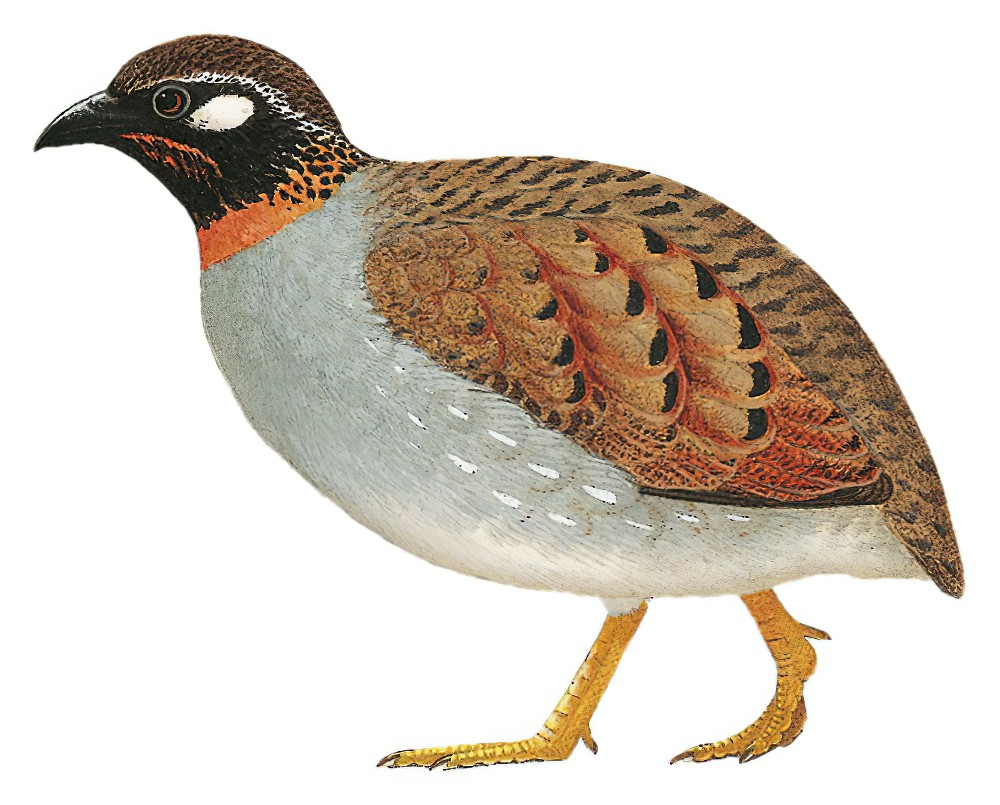Hainan Partridge / Arborophila ardens

Hainan Partridge
SCI Name:
Protonym: Arboricola ardens Bull.Br.Orn.Club 1 p.6
Taxonomy: Galliformes / Phasianidae / Arborophila
Taxonomy Code: haipar1
Type Locality: Hainan, type from Liuwowan.
Author: Styan
Publish Year: 1892
IUCN Status: Vulnerable
DEFINITIONS
ARBOROPHILA
(Phasianidae; Ϯ Hill Partridge A. torqueola) L. arbor, arboris tree; Gr. φιλος philos lover; "Genus ARBOROPHILA nobis. Type. PERDIX OLIVACEA Lathami.? Piora of the Nipalese. Hill partridge and painted partridge of Europeans. ARBOROPHILA OLIVACEA nobis. Bill equal to the head, or nearly so, slender; the maxilla more than half cut out by a large membranous nareal tect, in which the advanced nares are opened longitudinally, near to the cutting edge, by an elliptic lateral downward cleft. Wings short, bowed and gradated, with the 5th quill longest. Tail 14, drooped, somewhat feeble, extremely rounded and concealed by the coverts. Legs and feet large. Tarsi elevate, unspurred, nude. Toes long; exterior lateral conspicuously larger than the inner. Nails lengthened and straightened. Cheeks invested with a red skin, which is nude in the orbitar region. .. Exclusively a forester, inhabiting the interior of deep woods, and perching as freely as a pheasant. Gregarious in coveys, breeds on the earth, feeds on the ground and on trees, eating berries, seeds and insects. Intestines and cæca longer than in Perdix, with a large powerful gizzard. Has a shrill twittering call. Is very timid and not at all pugnacious." (Hodgson 1837); "Arborophila Hodgson, Madras Journ. Lit. Sci., 5, 1837, p. 303. Type, by monotypy, "Perdix olivacea Latham" = Perdix torqueola Valenciennes." (Peters, 1934, II, p. 98).
Var. Arboricola.
Synon. Dendrophila, Hyloperdix, Oreoperdix, Peloperdix, Phoenicoperdix, Tropicoperdix.
ardens
L. ardens, ardentis burning, glowing < ardere to burn.
● ex “Veuve à poitrine rouge du Cap de Bonne Espérance” of d’Aubenton 1765-1781, pl. 647, and “Veuve en feu” of de Buffon 1770-1785 (Euplectes).
UPPERCASE: current genus
Uppercase first letter: generic synonym
● and ● See: generic homonyms
lowercase: species and subspecies
●: early names, variants, mispellings
‡: extinct
†: type species
Gr.: ancient Greek
L.: Latin
<: derived from
syn: synonym of
/: separates historical and modern geographic names
ex: based on
TL: type locality
OD: original diagnosis (genus) or original description (species)












